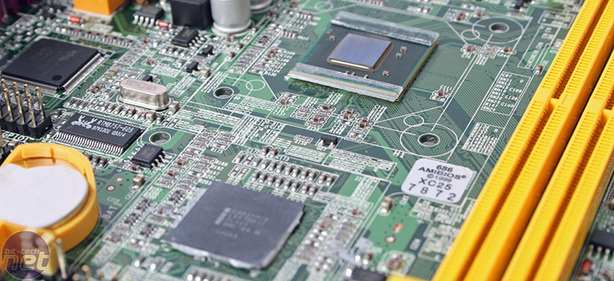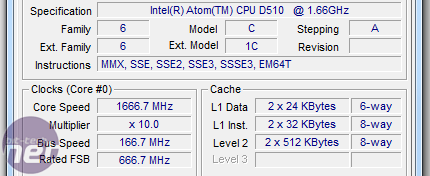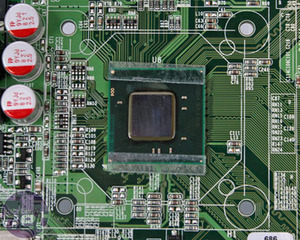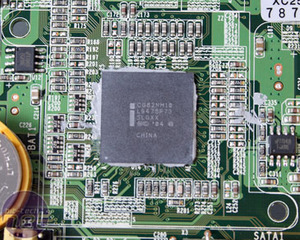Intel Pineview Analysis: Atom for 2010
Manufacturer: IntelIntel's latest Atom platform, 'Pineview', is a long awaited and somewhat delayed update. We first saw prototypes last summer, and we were told it was originally due for September, but Intel held off in its launch until January.
Pineview (the platform) includes the new 'Pine Trail' CPU - one or two Atom cores, with an integrated memory controller and graphics core. This then connects via a standard DMI link to a new NM10 Southbridge. Where the first Atom platform just recycled the old 945GC chipset and ICH7 Southbridge, this new platform has been redesigned to be small and to reduce power consumption.
On the downside, the Atom CPU cores have not been changed, and they are identical to before, in terms of data execution pipeline and using Intels 45nm high-k Metal Gate manufacturing technology - no 32nm here yet. However, the Front Side Bus has been increased from 133MHz to 166MHz to aid performance. If you didn't think it possible, the integrated graphics core is also take a step backwards from 954GSE's four pixel pipes at 400MHz to just two pixel pipelines at the same frequency. Note that's DirectX 9.0c pixel pipelines and not even DirectX 10-capable unified shaders either.
The memory interface remains a single-channel DDR2 affair, but a DDR3 update is apparently due later this year. The increase in Front Side Bus has also been mirrored with an increase in memory clock: up from the lazy 533MHz of old to a nippier 667MHz or 800MHz.

Unfortunately, despite being a single bit of silicon, the CPU(s) are connected to the memory/graphics/DMI portion via a standard Front Side Bus link, not even the newer and faster QPI. This means that apart from the odd incremental frequency increase, the performance of a Pinview system should largely be the same as previous Atom PCs. Intel's focus this time was not on performance, but optimising the platform for size and power use. After all, its Atom products remain hugely popular, and the drive for ‘greener computing’, smaller products and more battery life from the mass market drowns out the rest of us shouting for more performance. More importantly, Intel certainly does not want to cannibalise its own CULV and Celeron market either.
It's not all ‘meh’ though: the power savings are significant. Dropping the 9.3-11.8W (depending on whether the mobile option was used) 945GSE+ICH7 chipset, to which the old Atom CPUs would add between 4-8W (for single- and dual-core respectively). The old platform could therefore draw from 13.3 to 19.8W, depending on the configuration. In contrast, the new D510 dual-core CPU/Northbridge and the new NM10 Southbridge of Pineview consumes just 15.1W. That’s not much for a desktop systems, but for battery-limited PCs, there’s a significant 24 per cent power draw advantage.

MSI MPG Velox 100R Chassis Review
October 14 2021 | 15:04












Want to comment? Please log in.